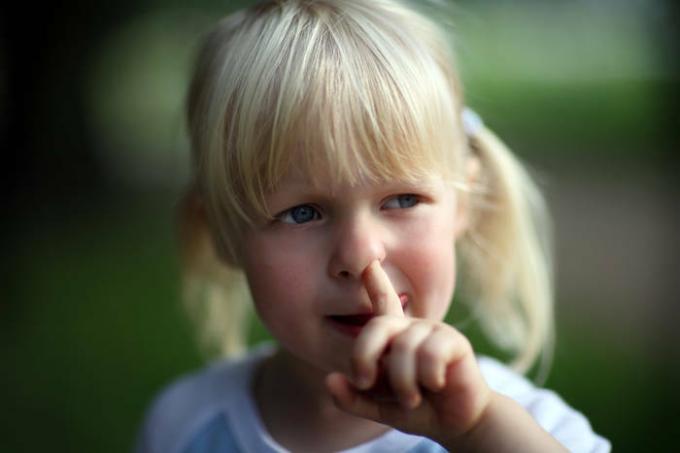Why do children have nosebleeds, how to properly stop nosebleeds and who to contact if it is repeated regularly
Every child has a nosebleed at least once in his life. The situation is unpleasant, but most often it resolves quickly and is not a sign of serious problems. However, it happens that the baby's nosebleeds recur several times a month. This is a serious reason to see a pediatrician or even go to a hematologist. About why a child may have nosebleeds, how to quickly and effectively stop it, and in what cases it is necessary to contact a specialist, we were told by the candidate of medical sciences and the head of the clinic "Suchasna pediatriya Evidence " Sergey Makarov.
The fact that the nasal mucosa is one of the most common bleeding sites is due to physiology. “We need a nose to condition the air we breathe: to humidify, cleanse, disinfect, and, among other things, to warm,” explains Sergey Makarov. - The air heats up due to the fact that a large number of vessels are located in the nasal mucosa, and the blood flowing through these vessels gives off its heat. Since there are many vessels in the nasal mucosa, this is the place where bleeding can potentially occur. " If a child has nosebleeds, it must be stopped first. And then it is imperative to figure out the reasons that could provoke it.
How to stop nosebleeds properly

To stop nosebleeds, seat your child correctly / istockphoto.com
"The most common mistake with nosebleeds, when the child is asked to throw his head back, says Sergey Makarov. "It doesn't stop the bleeding in any way, but only leads to the fact that the blood flows down the throat, swallowed and fills the stomach, which may well cause vomiting."
First aid for nosebleeds should be provided as follows:
- Place the child in a chair and ask to tilt the torso forward a little. Not much, so that he does not lie on his own knees.
- Press the wings of the nose firmly against the septum with two fingers.
- If there is an opportunity and desire, in parallel (without letting go of the fingers from the wings of the nose), you can take any cold object (for example, ice from the freezer), wrap it with a handkerchief and attach it to the bridge of the nose. This is not necessary, but you can do it.
- Pressing your nose with your fingers, mark the time and wait 5-10 minutes. If the bleeding was not very strong (conditionally flowed out to a teaspoon of blood), 5 minutes is enough. If the blood was intense, it is better to wait 10 minutes.
- Let go of the wings of the nose. If the bleeding does not resume, then the blood has stopped. It is necessary not to blow your nose, not pick your nose with your finger and allow the wound to heal completely.
If the blood continues to flow, repeat the procedure for another 10 minutes. If bleeding continues after this, call an ambulance. An anterior nasal tamponade procedure or a haemostatic agent may be needed.
Why can a child have nosebleeds?
Having solved the problem, be sure to try to find out the reason that could provoke nosebleeds. There can be many such reasons - from the living conditions of the child and ending with the structural features of the nasal mucosa.
.

Nose picking can cause nosebleeds / istockphoto.com
Mucosal injury. “Most often, nosebleeds can be caused by mechanical damage to blood vessels,” says Sergey Makarov. - It may be an injury as a result of a blow, or a child caught a vessel with a fingernail while picking his nose. A foreign body can damage the vessels and provoke bleeding. Also, mechanical reasons include too strong and vigorous blowing out of the nose, or very frequent and intensive use of the nasal aspirator. "
Viral diseases. “Sometimes nosebleeds go against the background of the fact that the child is suffering a viral (most often respiratory) disease. Especially if it is accompanied by runny nose", - explains Sergey Makarov.
Living conditions. “Insufficient humidity in the apartment leads to dryness of the nasal mucosa. Because of this, the fragility of the capillaries increases, they are very easy to injure, and the nosebleeds more often, ”says Sergey Makarov. - Another not obvious to parents, but an important reason: passive smoking. If one of the adults smokes in the room where the child is, or even on the balcony. "

Sometimes nosebleeds come from vigorous blowing / istockphoto.com
Food. “Make sure your child is eating enough fruits, vegetables and greens, wherever ascorbic acid, rutin and other bioflavonoids necessary to maintain the elasticity and integrity of the vascular wall. These are bell peppers, onions, black currants, cherries, rose hips, citrus fruits, - Sergey Makarov lists. “In case of deficiency of these substances, increased fragility of capillaries can also be observed”.
Medications. “Sometimes nosebleeds are caused by the use of topical nasal steroids. These are hormonal nasal sprays that are used to treat allergic rhinitis, rhinosinusitis and adenoids. These drugs have a specific application. If the aerosol is directed at the nasal septum during injection, this significantly increases the risk of bleeding. Therefore, it is necessary to inject the spray onto the side wall of the nasal cavity, ”warns Sergey Makarov
If nose bleeds frequently and for no reason

Frequent nosebleeds are a reason to see a hematologist / istockphoto.com
Sometimes a child's nose bleeds against the background of general well-being. He does not pick in his nose, ARVI does not get sick, the humidity in the house is clear according to the hygrometer, and episodes of bleeding are repeated a couple of times a month. “This can happen because of the anatomical structure of the nasal mucosa,” explains Sergey Makarov. "It may be that there are too many capillaries, they are located too superficially and are too fragile in themselves, so spontaneous nosebleeds occur without mechanical action." In this case, the child needs an ENT - he will prescribe a procedure for coagulation of blood vessels in this area. The vessels are cauterized with a special device (diathermocoagulator) or by applying silver nitrate, and nosebleeds stop.
However, spontaneous bleeding can also be a sign of serious diseases of the hematopoietic system. For example, blood clotting disorders. “This is a large layer of various diseases that are relatively easy to diagnose. Therefore, if a child's nosebleeds occur systematically, you should contact a hematologist who will prescribe the necessary tests to rule out blood diseases, ”says Sergey Makarov. Excessive vigilance in this situation does not hurt: three to four episodes of bleeding per month (if you are sure you know that there was no other reason) - this is a sufficient reason to play it safe and go to a narrow specialist.
You will also be interested in reading:
Why does a child have a nosebleed
A child's nosebleed: what to do, where to look for reasons
Nosebleeds in a child: why and what to do


